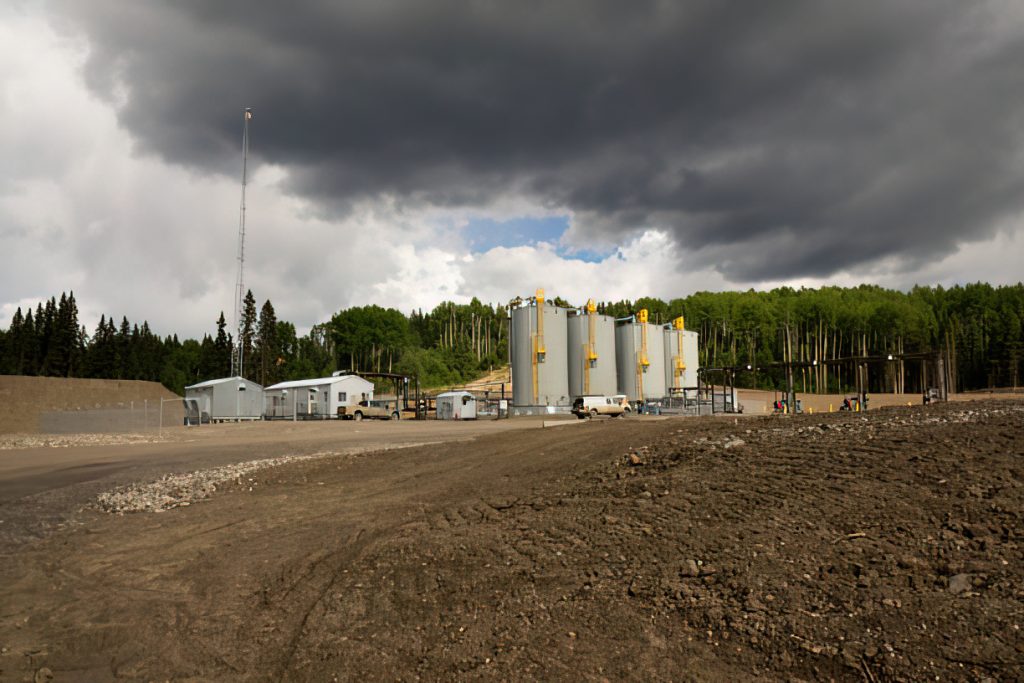Montney shale gas play in northeastern B.C. expected to restart

By Bruce Lantz
The jury is still out on whether an agreement between the British Columbia government and several First Nations on resource management is a positive step or just politicking.
Recently the B.C. Government signed deals with the Fort Nelson, Saulteau, Halfway River and Doig River First Nations that are expected to restart stalled oil and gas development in the Montney shale gas play in northeastern B.C. Those agreements follow on the heels of a similar agreement inked with the Blueberry River First Nation. The agreements offer a consensus on the management of land, wildlife and restoration in the area, along with a revenue-sharing deal which will support First Nations communities. The Blueberry River agreement goes even further, placing an annual cap on land that can be used for oil and gas development. The negotiations started in 2021 when the B.C. Supreme Court ruled that decades of natural resources extraction and industrial development had infringed on indigenous rights.
“Doig River First Nation has been advocating for a meaningful role in decision-making in natural resource development in our territory for many years and we are looking forward to working with the province in the months ahead to make this a reality,” said Doig River Chief Trevor Makadahay in a statement.
The Montney is a 38,000-kilometre (23,612 square miles) stretch of land that lies in the heart of Canada’s top gas-producing play. Part of the new deal exclusive to the Blueberry River First Nation puts an annual cap of 750 hectares (1853 acres) on new land that can be disturbed by oil and gas activity and protects from resource development 650,000 hectares of land that is highly valued by Blueberry River.
The agreement stipulates that Blueberry River First Nation will receive a C$87.5 million financial package over three years, with the opportunity to receive increased benefits from oil and gas revenue sharing and provincial royalty revenues in the next two fiscal years.
The province also agreed to reduce timber harvesting, put C$200 million into a land restoration fund by 2025, and work with First Nations on wildlife protection.
There is no limit on production or other activity on land that has been already disturbed by the approximately 25 companies that operate in the Montney area. And while the industry is seeking more clarity on how the land deemed available for new activity will be allocated, most leaders are cautiously optimistic.
“Anytime you change the rules there’s always some concern, but I think it’s possible to adapt,” said Tristan Goodman, president of the Explorers and Producers Association of Canada. He said he expects the B.C. Energy regulator now will be able to approve the 150-200 new oil and gas permits companies are waiting for this year.
The oil and gas industry will need to innovate to find ways to work with less land, said B.C. Premier David Eby in a statement. “It’s not a cap on production, it’s a cap on land disturbance,” he said.
The agreement has the support of the Canadian Association of Petroleum Producers (CAPP), which sees it as a joint effort by industry, the federal and B.C. governments who are aligned on key issues such as indigenous reconciliation, economic prosperity for Canadians and the need to address climate change.
“This interim agreement is a welcome step to chart a path which enables the responsible development of B.C.’s rich natural resources in a way that ensures mutual benefits for industry, indigenous nations and British Columbians across the province,” CAPP president and CEO Lisa Baiton told Resource World Magazine.
Baiton said the agreement “could provide a solution that creates certainty for companies to make their investment decisions, which would bring economic growth to the province and provide responsibly produced energy to meet a growing demand in the longer term.”
Petronas Energy Canada [PECL:TSX] CEO Izwan Ismail told a news conference, the agreement would help secure a gas supply to Canada’s first liquefied natural gas (LNG) terminal being built on B.C.’s Pacific coast.
“It is our expectation that the necessary work can now proceed to ensure that the gas Petronas Canada delivers to the LNG Canada project is responsibly produced right here in B.C., benefiting the entire province and country,” said Ismail, whose company holds a stake in the LNG export terminal being built at Kitimat, B.C.
CAPP’s Baiton said they expect investments in natural gas and LNG to grow through 2023 as LNG construction continues towards completion, along with other projects which are progressing. One of the fastest ways Canada can contribute to significantly lowering global greenhouse gas emissions is by exporting lower emission liquefied natural gas to countries who are looking to reduce their reliance on coal or Russian natural gas.
“Global demand for energy will remain strong for decades and Canada has a role to play in providing safer and lower emission resources to the world’s energy mix,” Baiton said. “Working collaboratively with government and indigenous peoples, the oil and natural gas industry can be a significant part of the solution to many of the challenges we are facing today.”
